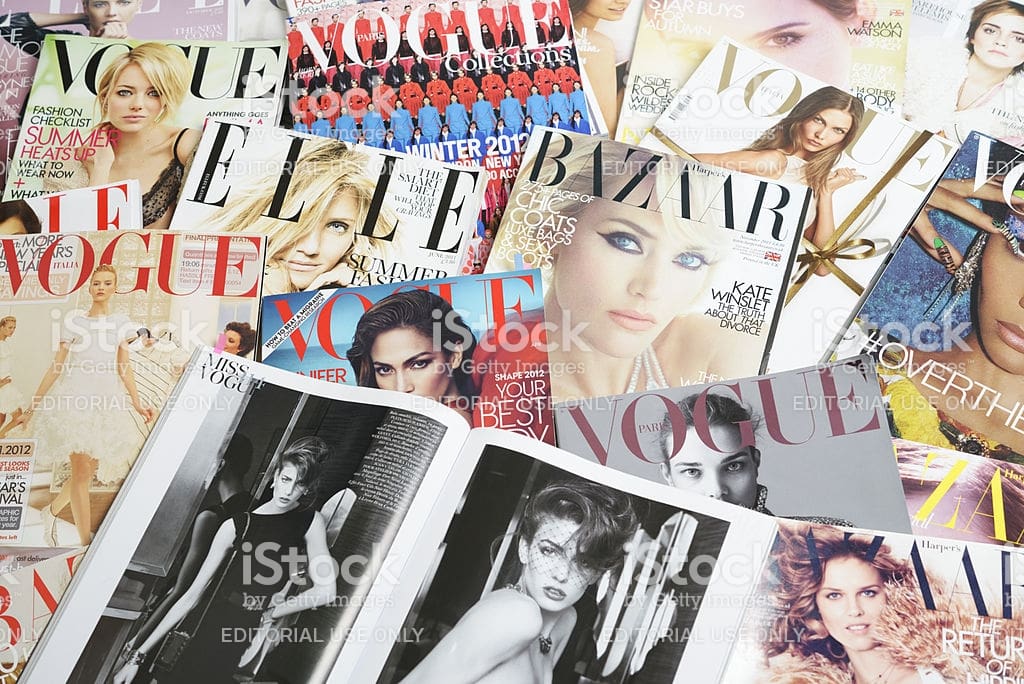Fashion journalism is continually evolving and changing shape, however, there is still a distinct lack of critical writing in mainstream and indie fashion magazines, even those claiming that their independence gives them an edge.
It’s pretty clear that there is a need to hold industry accountable, but when the ‘hot takes’ that fashion magazines hold up as proof that they’re challenging the mainstream are as boring as “new sustainable line of clothing from historically unsustainable brand shows a shift in industry thinking” it’s not even worth pretending that that’s what you’re doing, really. Worse still, are the takes that headline: “why we need a radical fashion revolution” and go on to make the argument that the public should do away with fast fashion by choosing to buy better quality clothing. Obviously, anyone who persists with fast fashion is an Uneducated Loser (read: poor person).
Vestoj is the best example that I’ve found of a fashion journal that actually interrogates, critiques and uncovers not only the underlying trends and issues within the fashion industry, but also the operation of fashion in global and individual ways. It’s not super visual, and it doesn’t use advertising, which makes it quite dense and wordy, but the ideas it puts forth are just genuinely very interesting. Vestoj means ‘clothing’ in Esperanto, a language that was made up in the late nineteenth century in an attempt to unify the world. It seems naïve and idealistic that fashion — which relies so much on capital — can be held up as unifying when it so often divides people by class, gender and culture. Yet this magazine is very much of the view that you don’t have to be anti-fashion in order to be critical of the way fashion operates in a capitalist world, and that being critical of the way fashion operates in a capitalist world doesn’t mean that you can’t also enjoy taking part in it as a cultural phenomenon.
Academic writing on fashion cannot be separated from the fashion industry itself and is essential to holding the industry accountable. As Yuniya Kawamura says, “institutions that help create and spread fashion, such as fashion magazines and newspaper periodicals, are participants in the system… the link between the production/distribution of clothing and the dissemination of the idea of fashion is interdependent.” The increased focus on bridging the gap between academia, politics, art and fashion is something that Vestoj is very good at. It is by no means the first publication to do this, and it borrows much that has been in discussion in academia for centuries, but in bringing it to industry, and looking at fashion on a much deeper, theoretical level, it forces other independent fashion publications to consider theory as well, at least on a level of self-reflection. This is especially influential, because fashion media is easily as, if not more important than the word of brands themselves.
Past themes of Vestoj have included masculinities, power, shame and capital. The theme always comes first, according to publisher and editor-in-chief Anja Aronowsky Cronberg. She has an advisory board that is made up of 50 per cent academic and 50 per cent industry representatives, which is essential to helping maintain relevance to both fields. Vestoj’s editorial philosophy addresses three central ideas; independence, quality of academic, interdisciplinary content, and the gratification of the reader. The manifesto states: “We must remain independent in thought and action. We must actively encourage critical thought and never be satisfied until we have examined every theme intrepidly… advertising is forbidden”, “We will place academia and industry side by side, and give equal significance to both”, “Fashion must always be taken seriously… We are as interested in the minutiae of clothing as we are in the grand themes of fashion”.
One of the most beautiful articles I’ve ever read was about the importance of fashion to homeless people. It described the significance of the garments they own, not only for the fact that they provide safety, comfort and warmth, but for what they say about personality on the street, what they say about the relationship that these individuals have, the ways in which it marks the passing of time. This is demonstrative of the fact that there is a much deeper level of fashion journalism out there, that goes past advertising, and goes past surface level ethical consumerism.





